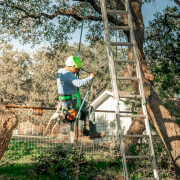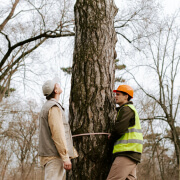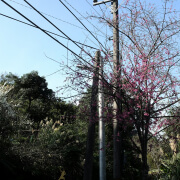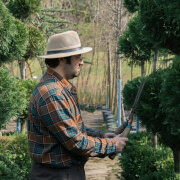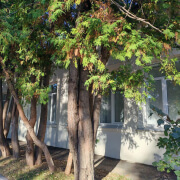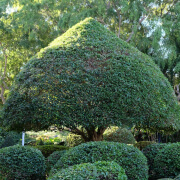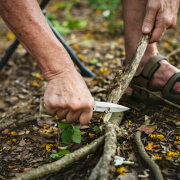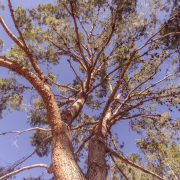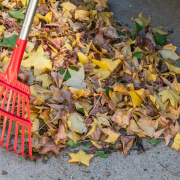Using Mulch To Protect Your Trees
Mulching is a simple yet effective way to maintain the health and beauty of your trees, creating a layer of protection that can make a significant difference to their wellbeing. When you spread mulch around the base of a tree, you’re providing it with additional support to thrive in its environment. Not only does mulch aid in nurturing the trees, but it also enhances the aesthetics of your garden.
Trees in urban areas, like Brisbane, face challenges from varying weather conditions and human activity. By applying mulch, you help conserve moisture in the soil, regulate ground temperature, and suppress unwelcome weed growth, which competes with trees for nutrients. With some attention and effort, mulching can work wonders for both young saplings and mature trees.
Benefits of Mulching for Tree Health
Mulching offers several advantages that contribute to the overall health of your trees. Here are some key benefits:
– Moisture Retention: One primary benefit of mulching is its ability to conserve soil moisture. By covering the ground, mulch slows down evaporation and supplies a more stable water source for trees, especially during dry spells. This is particularly beneficial in Brisbane, where temperatures can be high, leading to quick moisture loss.
– Temperature Regulation: Mulch acts as an insulating layer, keeping roots cool during the warmth of summer and warm during cooler months. This temperature regulation reduces stress on trees and supports steady growth throughout the year.
– Weed Suppression: Weeds often pose problems by competing for nutrients essential to a tree’s health. With mulch in place, the growth of weeds is significantly decreased, allowing your trees to access nutrients more effectively and without interruption.
In addition to these practical perks, mulch can transform the appearance of your garden, giving it a neat and well-cared-for look.
Choosing the Right Mulch
Selecting the appropriate mulch involves understanding what’s best suited for your trees and the local area. Here’s what to consider:
– Types of Mulch: Mulch can be organic or inorganic. Organic mulch, such as wood chips and bark, decomposes over time, enriching the soil with nutrients. In contrast, inorganic options like stones or landscape fabric might be more suitable for certain settings due to their durability.
– Suitability for Brisbane’s Climate: With the region’s distinct seasonal shifts, it’s important to choose mulch that holds up against Brisbane’s weather patterns. Organic mulches, for instance, not only help with nutrient addition but are also excellent for water retention during dry seasons.
– Local Tree Species: Consider the particular needs of your tree species. Native trees might pair well with certain types of mulch that mimic their natural habitat, providing them with familiar resources and encouraging healthy growth.
By taking these factors into account, you can ensure your trees receive optimal support, enhancing their ability to flourish in their environment.
Proper Mulching Techniques
Applying mulch correctly is essential for reaping all its benefits. Follow these simple steps to ensure your trees are well protected:
1. Prepare the Area: Start by clearing away any weeds or grass from around the base of the tree. This gives the mulch a clean surface and helps it stay in place.
2. Measure and Spread: Lay down a layer of mulch that’s about 5 to 10 centimetres thick. Start around 5 centimetres away from the tree trunk to avoid rotting the base and spread the mulch out to form a circle as wide as you prefer.
3. Form a Doughnut, Not a Volcano: Avoid piling mulch directly against the trunk like a volcano; instead, aim for a doughnut shape that allows air circulation around the base.
By following these guidelines, you help prevent unnecessary issues such as bark decay and ensure your trees receive the best start possible. Regular checks and replenishing the mulch as it breaks down will keep your garden in top shape.
Seasonal Mulching Tips
With Brisbane’s unique weather patterns, adapting your mulching techniques to the seasons is a smart move:
– Preparing for the Dry Season: As the dry season approaches, ensure your mulch layer is thick enough to maintain soil moisture. A consistent moisture level helps trees withstand the heat and reduces water demands.
– Winter Care: Before winter sets in, a fresh layer of mulch can insulate the roots, keeping them warmer. While Brisbane winters are mild by international standards, maintaining mulch helps manage temperature fluctuations that can stress trees.
– Spring Renewal: Once the cooler months are over, check if the mulch needs freshening up. This is the perfect time to add new organic mulch, which will break down in warmer months, enhancing soil fertility.
Keep Your Trees Strong and Healthy with Expert Care
Mulching is an effective way to support healthy tree growth all year round. By choosing the right mulch, applying it correctly, and adjusting it with the seasons, you create a nurturing environment that enhances both the appearance and health of your trees. Remember, regular maintenance and professional advice can ensure your garden thrives in every season. Proper mulch care can make a world of difference in maintaining a thriving landscape.
By keeping your trees healthy and thriving, you ensure your outdoor spaces are both beautiful and functional. For a comprehensive approach to tree maintenance in Brisbane, trust the experts at TPS Tree Services. With our seasoned advice and dedicated service, your trees will enjoy the best care all year round.


